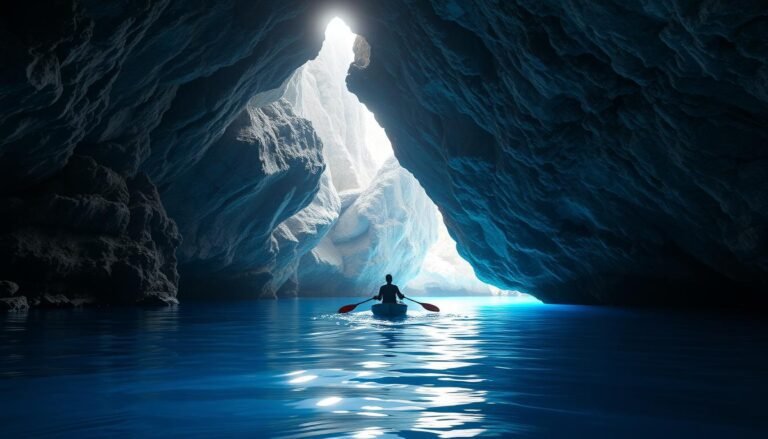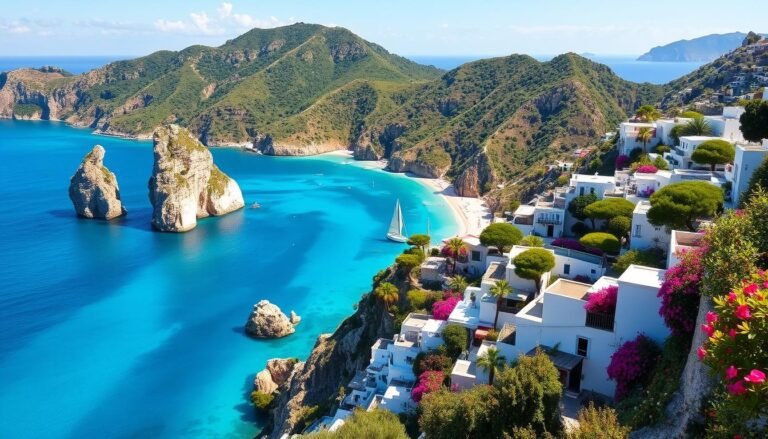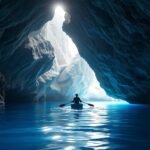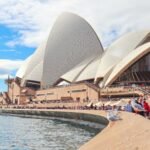As I step into Banff National Park, the towering peaks of the Canadian Rockies surround me, and the Bow River winds through the valley below. But it’s the thundering Bow Falls that captivates my senses, drawing me closer to witness its majestic beauty. This natural wonder, located in the heart of Banff, is a must-see destination for nature lovers and outdoor enthusiasts alike.
Key Takeaways
- Bow Falls is a breathtaking waterfall located in Banff National Park, one of Canada’s premier Rocky Mountain destinations.
- The falls are formed by the Bow River as it cascades over a natural staircase of rocks, creating a mesmerizing display of power and grace.
- Bow Falls has gained worldwide recognition, having been featured in the popular movie “The Revenant,” further enhancing its popularity as a must-see attraction.
- Visitors can enjoy stunning viewpoints and easy access to the falls, making it a popular spot for nature photography and outdoor adventures.
- The surrounding landscape of Banff National Park is a treasure trove of natural beauty, offering a wealth of opportunities for exploration and discovery.
The Majestic Bow Falls: A Thundering Cascade in Banff
Nestled within the stunning Banff National Park, the Bow Falls are a true natural wonder. Formed by the mighty Bow River, this captivating waterfall is the result of a fascinating geological process that has unfolded over thousands of years.
Geological Formation and Waterflow
The Bow River originates from the Bow Glacier in the Canadian Rockies, and its flow is enhanced by the melting of glacial meltwater. As the river cascades over the limestone formations and dolomite deposits that characterize the area, it creates a breathtaking 30-foot (9-meter) plunge into the rocky basin below. The unique geological processes that shape this landscape contribute to the crystal-clear, turquoise hue of the water, making Bow Falls a true feast for the senses.
Accessibility and Viewpoints
Bow Falls is easily accessible for visitors, with well-maintained walking paths and accessible pathways leading to various viewing platforms and scenic vantage points. The west-bank viewpoint is considered the premier spot to witness the falls in all their thundering glory, while the east-bank trail leads to the famous Surprise Corner viewpoint, offering a stunning panorama of the cascades and the iconic Fairmont Banff Springs hotel in the background.
Whether you’re seeking a peaceful moment of contemplation or an awe-inspiring natural display, Bow Falls in Banff National Park is a true must-see destination that promises to leave a lasting impression on all who visit.
A Hub of Biodiversity and Ecological Significance
Bow Falls and its surrounding environment play a crucial role in the local ecosystem, serving as a hub of biodiversity. The mist created by the cascading water supports a lush vegetation, including mosses and ferns, which thrive in the humid conditions. The waterfall and the Bow River are also an essential water source for a variety of wildlife in the area, attracting animals such as deer, elk, and a diverse range of bird species, including bald eagles and owls.
Habitats and Wildlife
The dynamic ecosystem around Bow Falls highlights the interconnectedness of nature and the importance of preserving such natural wonders. The park is home to a rich and diverse array of wildlife, including grizzly bears, black bears, wolves, elk, cougars, moose, and bald eagles. These animals rely on the habitats and resources provided by the Bow Valley, making the area a critical hub for biodiversity in the region.
- Lush vegetation, including mosses and ferns, thrives in the humid conditions created by the waterfall’s mist.
- Bow Falls and the Bow River serve as a vital water source for a variety of wildlife, including deer, elk, and birds.
- The area is a habitat for a rich and diverse array of wildlife, such as grizzly bears, black bears, wolves, elk, cougars, moose, and bald eagles.
| Ecosystem Element | Significance |
|---|---|
| Bow Falls and Bow River | Essential water source for local wildlife |
| Mist-supported vegetation | Provides habitats for diverse plant and animal species |
| Variety of wildlife | Grizzly bears, black bears, wolves, elk, cougars, moose, bald eagles, and more |
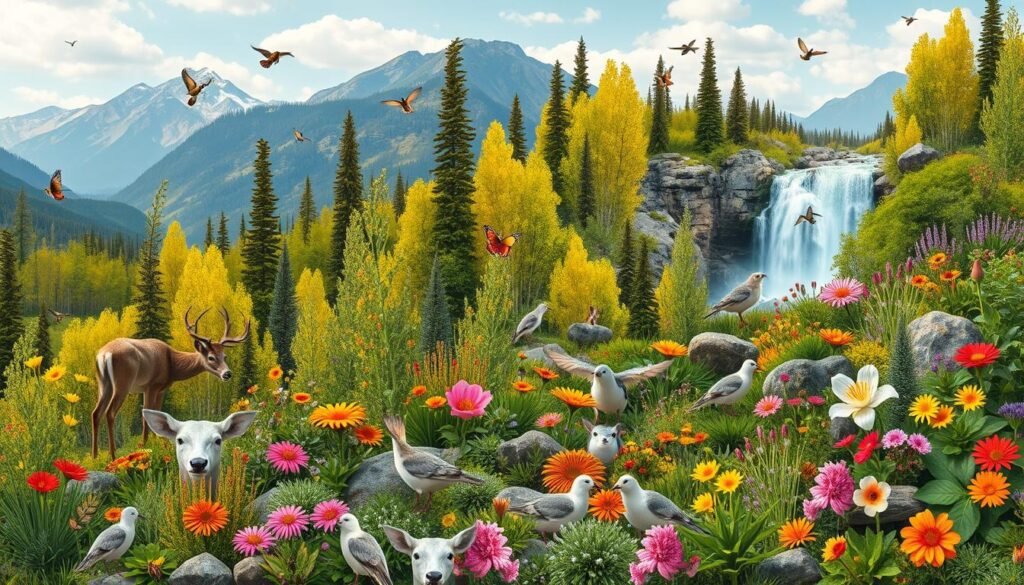
The ecological significance of Bow Falls and its surrounding environment highlights the importance of preserving and protecting this natural wonder for future generations to enjoy and appreciate.
Bow Falls: A Sacred Site Steeped in History
Bow Falls holds a profound historical significance, both for the Indigenous peoples of the region and for early explorers and settlers. This majestic waterfall has been a sacred site for Indigenous communities, including the Stoney Nakoda and Blackfoot Nations, who have long recognized its spiritual significance and its vital role in the natural world.
The Indigenous history of Bow Falls dates back thousands of years. The Bow River, which feeds the falls, has been an important source of sustenance and a gathering place for Indigenous peoples for generations. The falls themselves have held a sacred place in the beliefs and traditions of these communities, with the thundering waters serving as a connection to the spiritual realm.
In the late 19th century, as Banff National Park began to take shape, Bow Falls became a popular destination for tourists and explorers. The natural wonder of the falls, combined with the stunning landscapes of the surrounding area, helped to drive the growth and development of the park, which was established in 1885 to protect the region’s natural beauty and ecological integrity for future generations.
Today, the Bow Falls continue to hold immense cultural and spiritual significance for the Indigenous peoples of the region. Conservation efforts, such as the Indigenous Framework developed in the Town of Banff, aim to build relationships, promote education, and advance reconciliation efforts, ensuring that the sacred history of this natural wonder is honored and respected.
| Key Facts about Bow Falls and Indigenous History |
|---|
|
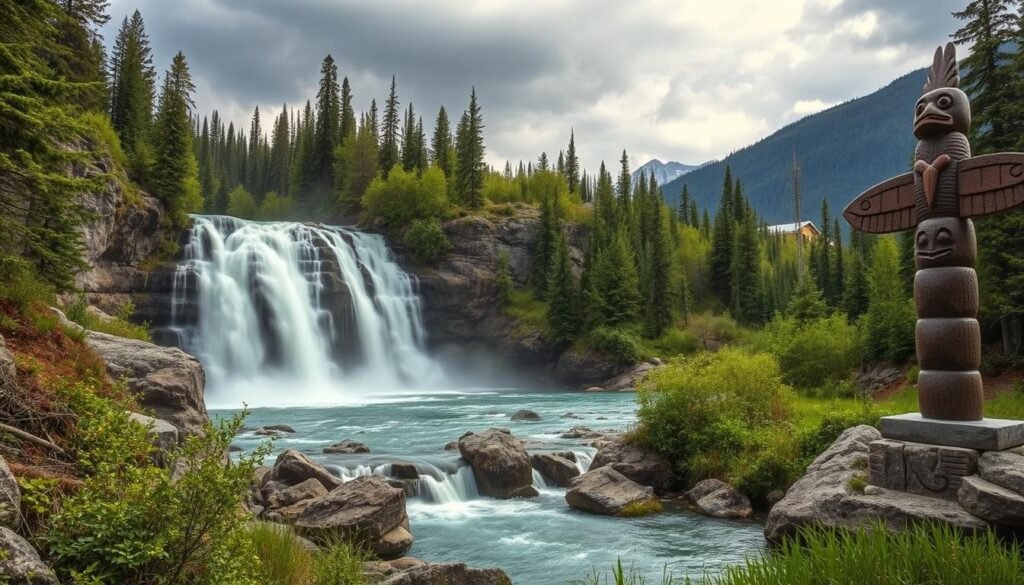
Experience Bow Falls: Tips for Visiting
When planning a visit to Bow Falls, there are several tips and guidelines to keep in mind. The best time to witness the majestic Bow Falls is during the summer months, when the weather is mild, and the waterfall is at its fullest due to glacial melt. The spring season also offers an impressive display of Bow Falls, as the increased volume of water from snowmelt creates a thundering cascade.
Best Times to Visit
Regardless of the time of year, visitors can enjoy the stunning views and tranquil atmosphere that Bow Falls has to offer. The waterfall, standing at a height of 9.1 meters with a single drop, is a true natural wonder. While an average visit to Bow Falls is under 15 minutes, the area offers ample opportunities for exploration and recreation.
Hiking Trails and Activities
- Numerous hiking trails, such as the Hoodoos Trail and the Spray River Loop Trail, offer breathtaking viewpoints and the chance to explore the stunning wilderness of Banff National Park.
- Photographers will find Bow Falls to be a captivating subject, with the opportunity to capture the waterfall’s ever-changing moods and the vibrant wildlife that inhabits the region.
- For nature enthusiasts, the area around Bow Falls is a prime location for wildlife watching, with the chance to spot deer, elk, and a diverse array of bird species.
- Visitors can also enjoy various recreational opportunities, including picnicking, strolling along the riverside, and exploring the local breweries in Banff Town.
With its stunning natural beauty, captivating history, and diverse array of activities, Bow Falls is a must-visit destination for anyone exploring the Canadian Rockies. Whether you’re a nature lover, a photographer, or simply seeking a peaceful respite, Bow Falls is sure to leave a lasting impression.

Bow Falls: A Cinematic Marvel
Bow Falls has captivated the attention of filmmakers worldwide, with its stunning natural beauty serving as the backdrop for numerous cinematic productions. One of the most notable features was its appearance in the critically acclaimed film “The Revenant,” where the cascading waters and dramatic scenery provided the perfect setting for the movie’s intense and visually stunning scenes.
The Revenant’s director, Alejandro G. Iñárritu, recognized the cinematic potential of Bow Falls, showcasing its majestic presence and the raw power of its thundering waters. The waterfall’s inclusion in this high-profile Hollywood production has further solidified its status as a must-see destination for both nature enthusiasts and film aficionados alike.
Bow Falls’ cinematic legacy extends beyond “The Revenant,” as it has also been featured in various other film and television productions. Its breathtaking scenery and dramatic backdrops have made it a popular choice for Hollywood directors seeking to capture the essence of the Canadian Rockies on the silver screen.
From big-budget blockbusters to independent films, Bow Falls has served as a stunning Film Location, providing filmmakers with the perfect scenic backdrop to tell their stories. This natural wonder’s ability to captivate audiences and transport them to the heart of the wilderness is a testament to its enduring appeal and the power of cinema to bring the beauty of the natural world to life.
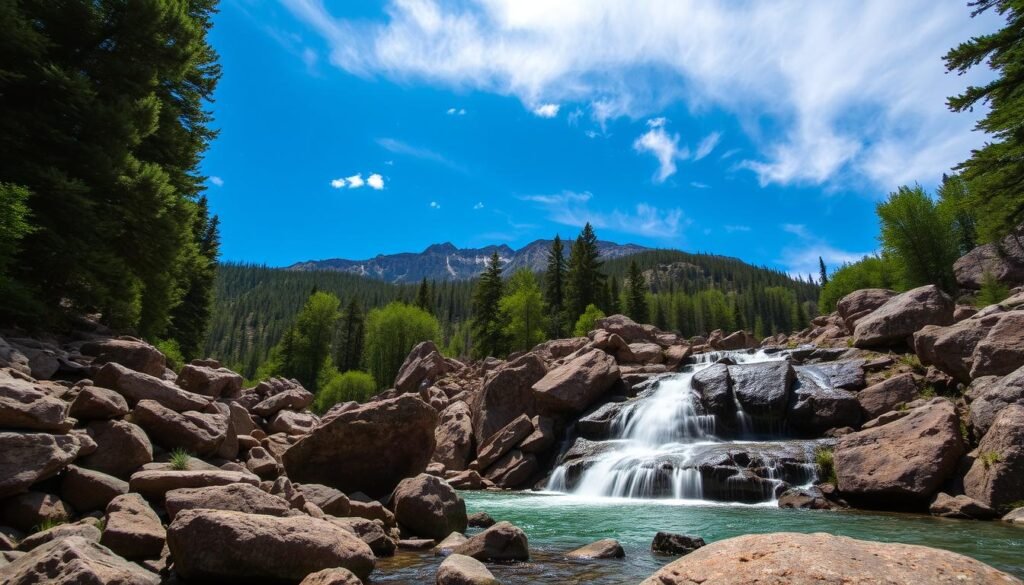
Bow Falls’ emergence as a Cinematic Marvel has undoubtedly played a significant role in its growing popularity and recognition among visitors from around the world. As a must-see destination for both nature lovers and film enthusiasts, this captivating waterfall continues to inspire and awe all who witness its breathtaking beauty and cinematic allure.
Capturing Nature’s Beauty: Photography at Bow Falls
As a photography enthusiast, I find Bow Falls in Banff National Park to be a true treasure trove of artistic inspiration. This picturesque waterfall, with its thundering cascade and stunning natural surroundings, offers endless opportunities to capture the beauty of nature. Particularly during the golden hours of sunrise and sunset, Bow Falls is transformed, with the warm hues of the sun casting a magical glow on the cascading waters and the surrounding landscape.
The ever-changing lighting conditions at Bow Falls create a constantly evolving canvas for photographers. From the soft, diffused light of the early morning to the dramatic shadows and vibrant reflections at dusk, each visit to this natural wonder presents a new challenge and a new opportunity to produce stunning, one-of-a-kind images. Whether you’re a seasoned pro or a budding enthusiast, the photographic possibilities at Bow Falls are truly endless.
As I plan my upcoming photography trip to the Canadian Rockies, Bow Falls remains at the top of my list of must-visit destinations. With its central location and easy accessibility, this captivating waterfall is the perfect spot to hone my skills and create lasting memories through the lens of my camera. I can’t wait to witness the ever-changing beauty of Bow Falls and to share the breathtaking results with others who share my passion for the art of photography.


